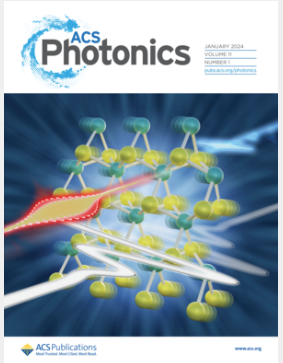Tunable Photoconductivity Polarity in a Two-Dimensional Ferromagnet for Enhanced Image Recognition
IF 6.5
1区 物理与天体物理
Q1 MATERIALS SCIENCE, MULTIDISCIPLINARY
引用次数: 0
Abstract
Exploring the optoelectronic characteristics of magnetic materials has the potential to merge the optical and magnetic functionalities within a spintronic system. This could pave the way for advancements in all-optical storage, photonic integrated circuits, and improved performance of photodetectors. In this work, we conduct a systematic analysis of the photoresponse in the two-dimensional ferromagnetic material Fe3GeTe2 (FGT) and discover the coexistence of positive photoconductivity (PPC) and negative photoconductivity (NPC), which can be toggled by adjusting either the light illumination power, bias voltage, or temperature. By modeling the photoresponse as it relates to various physical parameters, we determine that the photocurrent generation in the FGT nanoflake is driven by the bolometric effect, and the shift in photoconductivity polarity corresponds to the nonmonotonic resistance–temperature relationship of the conductive channel. Furthermore, we propose an enhanced image recognition vision system utilizing the FGT photodetector for extreme conditions, integrating the convolutional neural network algorithm to improve the image recognition accuracy in low-brightness and noise scenarios. Our findings delve into the combined optical, electrical, and magnetic modulation of two-dimensional ferromagnetic systems, potentially paving the way for new optoelectronic devices in the post-Moore era.

求助全文
约1分钟内获得全文
求助全文
来源期刊

ACS Photonics
NANOSCIENCE & NANOTECHNOLOGY-MATERIALS SCIENCE, MULTIDISCIPLINARY
CiteScore
11.90
自引率
5.70%
发文量
438
审稿时长
2.3 months
期刊介绍:
Published as soon as accepted and summarized in monthly issues, ACS Photonics will publish Research Articles, Letters, Perspectives, and Reviews, to encompass the full scope of published research in this field.
 求助内容:
求助内容: 应助结果提醒方式:
应助结果提醒方式:


